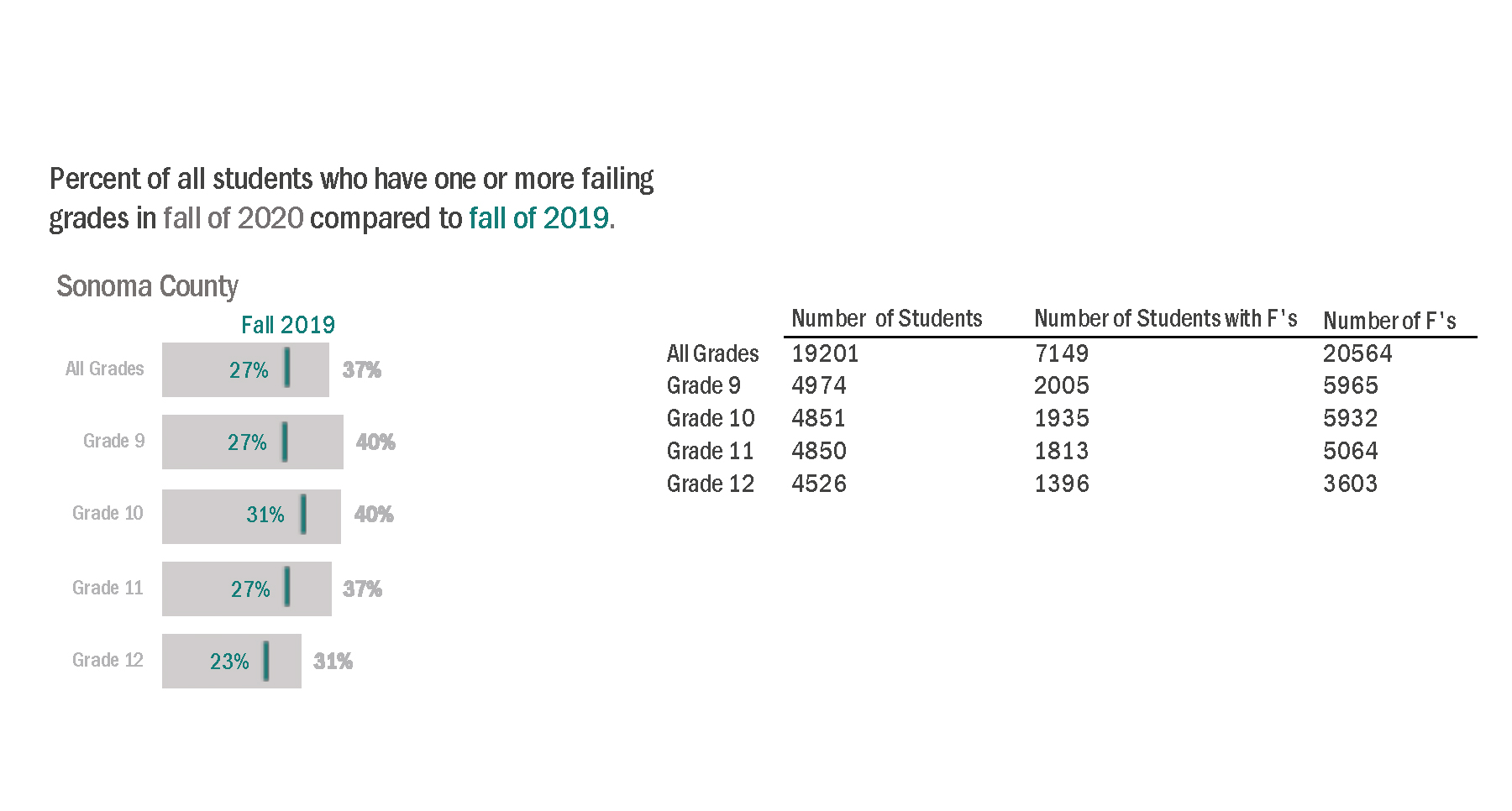Districts, SCOE Come Together to Address Distance Learning Challenges
Date: 11/18/2020
Author:
Grades and Social-Emotional Data Serve as a Call to Action
This fall, several Sonoma County superintendents recognized several trends related to staff and student wellbeing that caused great concern.
First, they began seeing a significant increase in students receiving failing grades, particularly in high school.

They also recognized that a large number of teachers were struggling with the stress of distance learning, managing their own families during COVID, and an intense wildfire season.
Finally, a survey conducted by the nonprofit organization YouthTruth of more than 4,500 Sonoma County high school students found that 71% reported that “feeling anxious about the future” was the number one barrier to distance learning. YouthTruth conducts surveys of high school students across California and the nation, and this finding was unique to Sonoma County. Looking at over 20,000 students across 20 other school systems (in California and across 8 other states) surveyed during the same period, the most frequently cited obstacle from those systems was “distractions at home.”
While it was no secret that distance learning and COVID-19 presented unparalleled challenges for teachers, families, and students alike, all this information, put together, served as a call to action. Urgent action was clearly needed to support the wellbeing of students and staff as well as to ensure students’ academic success.
Districts, SCOE Join Together to Confront Challenges
Superintendents came together across the high school districts to look at their data and urgently address these problems. At their request, SCOE held a convening over two, four-hour sessions for high school districts to delve into the data, hear different voices, surface bright spots, identify new strategies, and determine substantive next steps. Teams from each district attended, including teachers, counselors, principals, superintendents, and more.
They heard from students about the pressures they were facing at home and the obstacles to learning remotely. They reviewed county-wide grade data and received a report from YouthTruth about student engagement and wellbeing.
Surfacing Bright Spots
The second day of the convening focused on surfacing bright spots and learning from those who were seeing success in distance learning.
At Rancho Cotate High School, fewer students are receiving F’s this year, in contrast to the overall county trend. Principal Louis Ganzler described his school’s “3x3” approach to scheduling, where students take just three classes each semester, for a total of six over the course of the year. Fewer courses at one time have allowed students and teachers to develop closer relationships over distance learning and has mitigated the sense of overwhelm that many students and staff are experiencing.
“We're covering the same material at the end of the year, a student (still) has six classes on their transcript, but we are seeing that it has taken an enormous amount of pressure off both students and teachers,” he said.
Brandy Raymond, Curriculum and Assessment Coordinator at Roseland Charter, shared how her district has built on the strength of teacher relationships with students and focused its efforts on parent and student outreach. This includes giving teachers time each afternoon to call and text families of students who missed class that day.
“We have an hour in the afternoon each day where teachers are reaching out to students through student support and parent communication time,” she shared. “ If students didn't show up to a class, their teachers are on the phone, they are texting them, they are emailing them. they're calling families and they're just relentless to get them to attend those zoom meetings.”
Planning Next Steps
To translate the convening into meaningful action, participants came together as district teams and in job-alike groups across school districts to discuss short-term, mid-term, and long-term next steps.
While this first event focused on high school, everyone acknowledged that these critical issues exist at the elementary and middle school levels as well. SCOE will be hosting two separate summits for elementary and middle schools in early 2020.
“These convenings, where district teams came together to address common challenges, was a very inspiring first step,” said Dr. Jennie Snyder, Deputy Superintendent of Instruction at SCOE. “This is an opportunity for districts to learn from each other and with each other as they work to improve student experiences during the pandemic and into the future. We look forward to working alongside them as they take their next steps in this endeavor.”
These gatherings represent a remarkable coming together of school leaders and educators across Sonoma County to address these urgent challenges for the sake of our children.
“We thank the school leaders who brought this forward for their vision and commitment to Sonoma County young people,” said Steve Herrington, Sonoma County Superintendent of Schools. “We look forward to working alongside educators across the county to address these unprecedented challenges.”

